
Step 5: Assess Your Current Social Media Integration
ASSESS SOCIAL MEDIA TOOLS
Use the form below to assess your SM tool capabilities.

Use the form below to assess your SM tool capabilities.
Thank you for completing the self-assessment.
Click the link to print and download your results.
%TRACK_LINK%
We faced problems while connecting to the server or receiving data from the server. Please wait for a few seconds and try again.
If the problem persists, then check your internet connectivity. If all other sites open fine, then please contact the administrator of this website with the following information.
TextStatus: undefined
HTTP Error: undefined
Some error has occured.
If you wish to download a PDF of the results, you will have to use the “Save as PDF” function in your browser. Since the ACRP chooses not store user personal information, this WebResource does not provide the option to send results to your email.
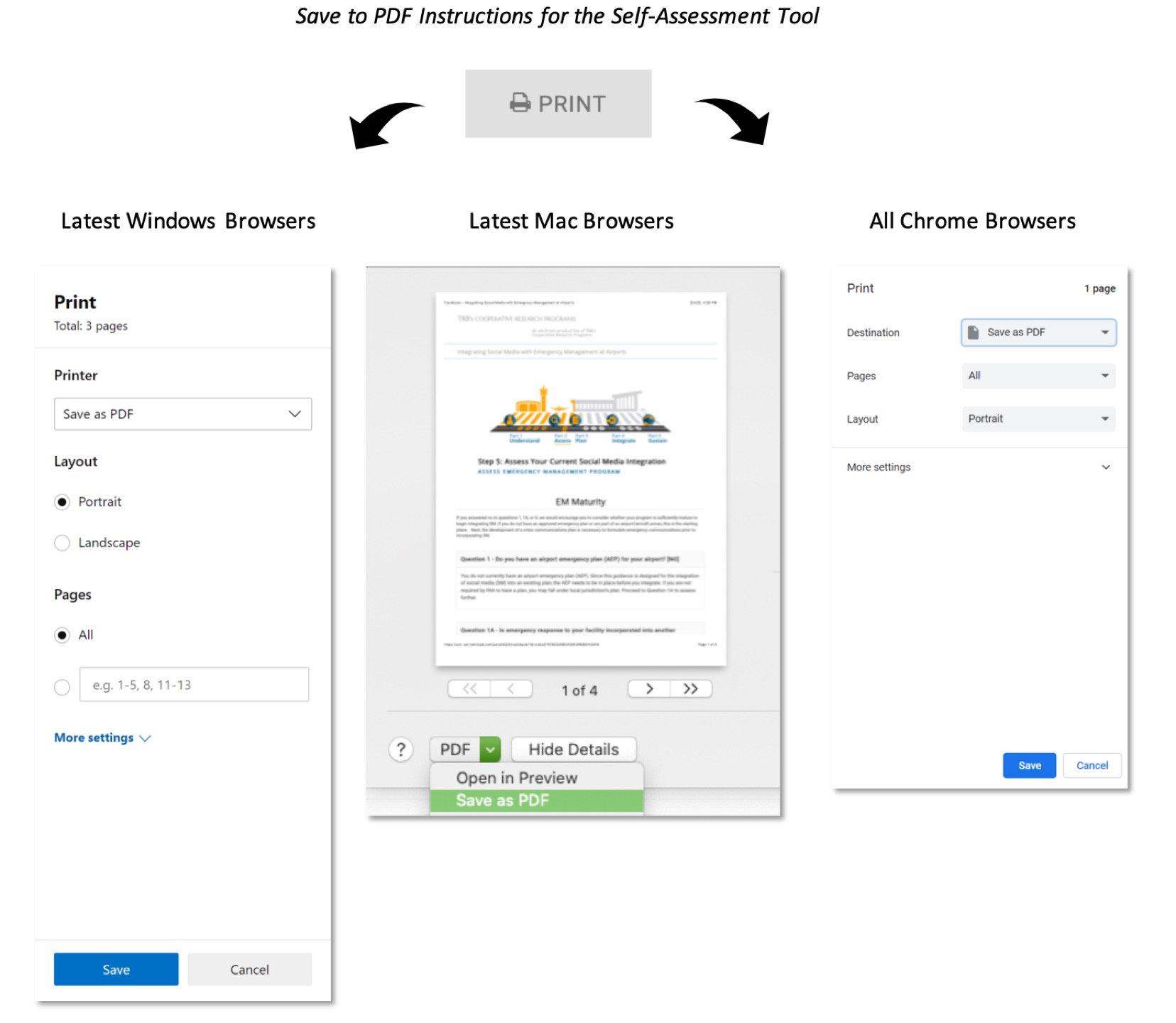
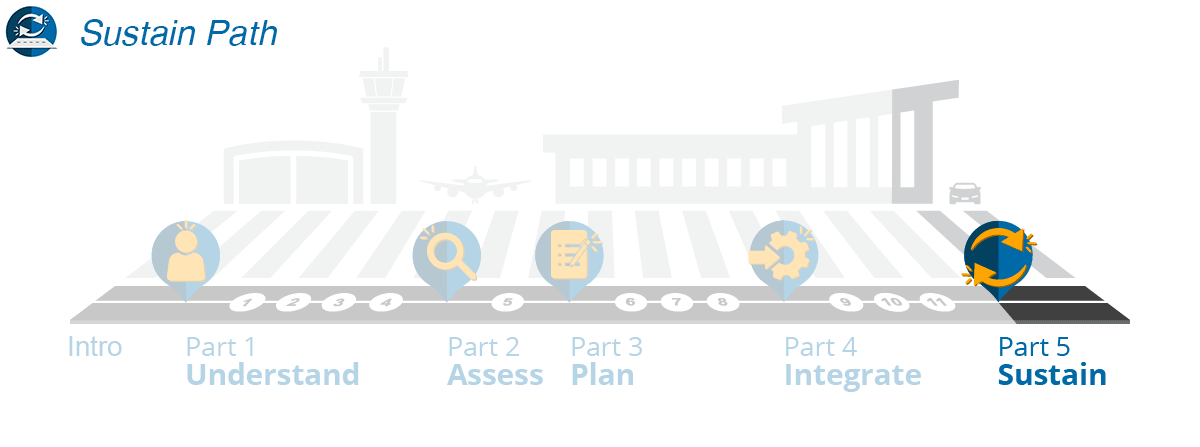
Sustain Path: Part 5
This part is on the Sustain Path. Those seeking to sustain an existing program for integrating social media with emergency management (SMEM) should jump to Part 5 of this WebResource. This part provides suggestions for sustaining your program, adding on new elements, acquiring further learning, and being innovative.
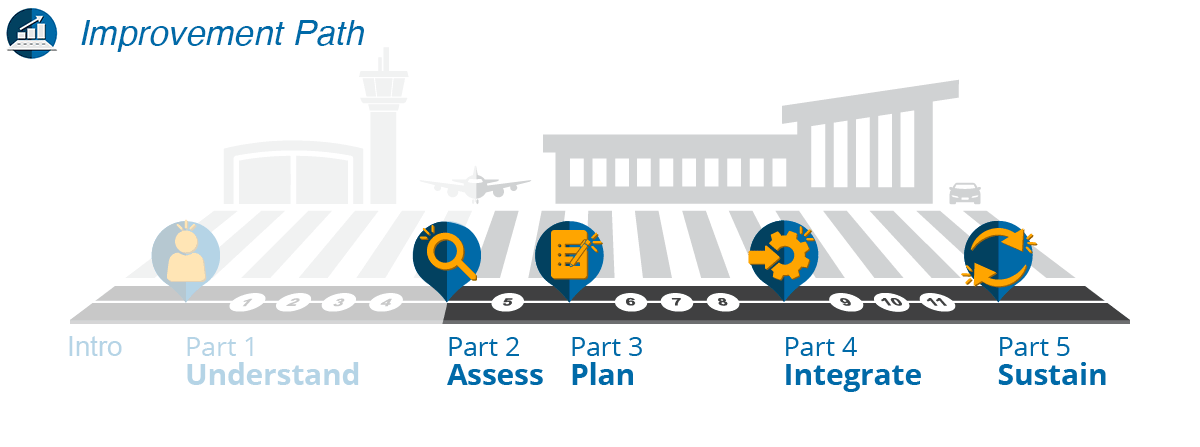
Improvement Path: Parts 2–5
This part/step is on the Improvement Path. Those looking to improve an existing program for integrating social media with emergency management (SMEM) should start with the Self-Assessment Tool. This tool will highlight areas in your program you should look to improve, and it will point you to the corresponding steps in the WebResource. You should also review Part 5: Sustain. As you have the time, take a few moments to review items not highlighted by the tool to re-evaluate your program in areas your Self-Assessment Tool results may not have highlighted.
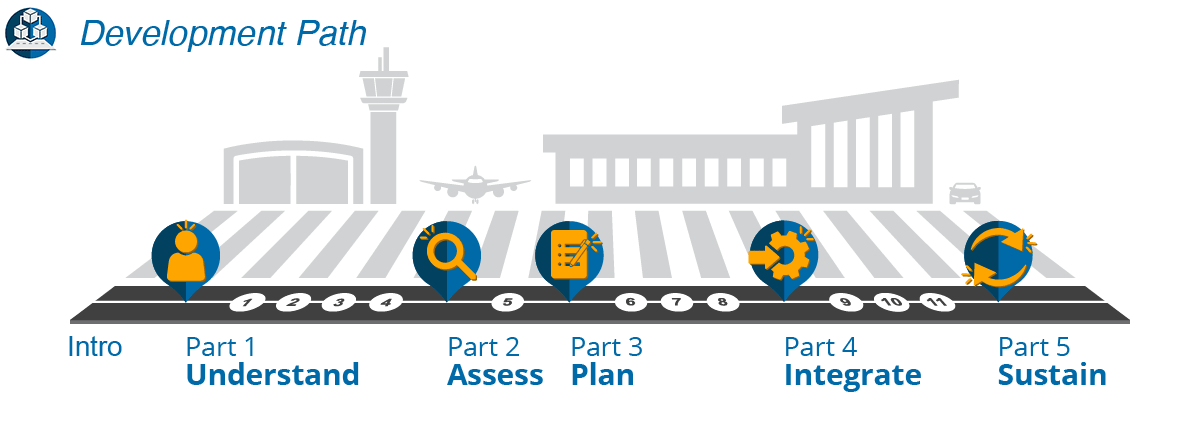
Development Path: Introduction–Part 5
This part/step is on the Development Path. Being new to social media integration with emergency management (SMEM) and desiring to build an SMEM program, you should start at the Introduction and continue through Parts 1–5. The Development Path will guide you through building a custom and sustainable SMEM program. Key pieces of this path include completing the Self-Assessment Tool and selecting the necessary tools to support your program.
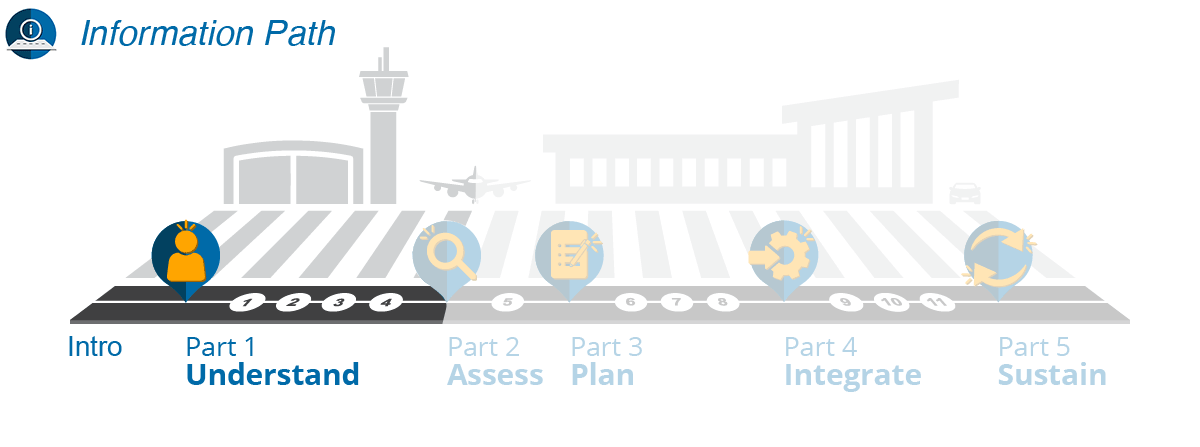
Information Path: Introduction–Part 1
This part/step is on the Information Path. If you just wish to learn more about this topic, this WebResource is an excellent educational resource. The Introduction and Part 1: Understand are specifically designed to provide an understanding of the benefits and challenges of using social media in emergency management and how it may be used. Additionally, these sections provide links to many resources as you dig deeper into the various subject areas.
This is the test popup
“One voice” messaging is publicly providing the same information and opinion of an incident regardless of the entity providing it.
If you are an emergency management (EM) or social media (SM) manager at your airport, you will serve as a champion for this effort. If you work for a small or medium airport without a dedicated EM manager, you should include your county EM manager to help champion this effort. Bringing these disciplines together is a team effort; together, as the champions, you will serve as the focal point for bringing all groups with a stake in SM (airlines, tenants, airport departments, federal partners, local government, etc.) and incident response (first responders, mutual aid, emergency dispatch, hospitals, volunteer organizations, etc.) together for shared situational awareness and coordination of response.

Sustain Path: Part 5
Those seeking to sustain an existing program for integrating social media with emergency management (SMEM) should jump to Part 5 of this WebResource. This part provides suggestions for sustaining your program, adding on new elements, acquiring further learning, and being innovative.

Improvement Path: Parts 2–5
Those looking to improve an existing program for integrating social media with emergency management (SMEM) should start with the Self-Assessment Tool. This tool will highlight areas in your program you should look to improve, and it will point you to the corresponding steps in the WebResource. You should also review Part 5: Sustain. As you have the time, take a few moments to review items not highlighted by the tool to re-evaluate your program in areas your Self-Assessment Tool results may not have highlighted.

Development Path: Introduction–Part 5
Being new to social media integration with emergency management (SMEM) and desiring to build an SMEM program, you should start at the Introduction and continue through Parts 1–5. The Development Path will guide you through building a custom and sustainable SMEM program. Key pieces of this path include completing the Self-Assessment Tool and selecting the necessary tools to support your program.

Information Path: Introduction–Part 1
If you just wish to learn more about this topic, this WebResource is an excellent educational resource. The Introduction and Part 1: Understand are specifically designed to provide an understanding of the benefits and challenges of using social media (SM) in emergency management (EM) and how SM may be used. Additionally, these sections provide links to many resources as you dig deeper into the various subject areas.
As an airport stakeholder, you partner with the airport operator to enable the success of the airport. The airport operator therefore relies on close collaboration with you, whether you are on or off the airport. Airlines/air carriers, tenants, fixed-base operators, concessionaires, local and federal agencies, and many other stakeholders play a vital role in maintaining operations. This WebResource emphasizes that during an emergency incident all stakeholders at an airport can speak with one voice, all the while protecting their respective company brands. A properly executed integration of social media (SM) during an incident will facilitate a quick recovery and shared situational awareness between you and the airport.
We encourage you to start with the Information Path through this WebResource and seek collaboration with the emergency management and SM managers at airports where you are a stakeholder.
As key team members in any emergency response, you understand the importance of timely and accurate information. As social media (SM) continues to dominate much of the public information during an incident, monitoring and assessing SM information can provide situational awareness on and around an incident. Furthermore, SM is a valuable tool for communicating with and directing the public, along with enabling first responders and others to reach those directly impacted or to keep others out of harm’s way. This WebResource provides the elements necessary for supporting field operations and communications through integrating SM and emergency management (EM) practices.
We encourage you to start with the Information Path through this WebResource and continue further under the direction of the champions of the development of your program for integrating SM with EM (your SM and EM managers).
As someone responsible for the success of your airport, you are keenly aware of how social media (SM) can impact the perception of your airport among customers and business partners, especially during critical operations and emergency events. This WebResource guides your SM and emergency management (EM) managers (the program’s champions) on how to develop and maintain an integrated program for managing SM during an incident. Properly managing communications such as SM during an emergency facilitates the speed of recovery and a return to normal operations.
The Information Path of this WebResource will provide you with a baseline understanding of this topic before you direct your managers to look further into developing an SM and EM integration (SMEM) program.
This WebResource is designed with you in mind as the champions of the social media (SM) and emergency management (EM) integration (SMEM) program. This integration will only be successful if you—the SM and EM managers—lead the program development as a team. The WebResource will lead you on a path from understanding SMEM to full integration. It provides a Self-Assessment Tool, tips for airports of various sizes, and plenty of supplemental material for digging deeper into specific topic areas. Your maturity in SMEM will dictate which path you take through this WebResource. If you are just starting out, the entirety of this WebResource is designed just for you.
This WebResource is also an excellent source for informing your responders and support groups, as well as your on-airport and off-airport stakeholders. Encourage them to read key sections of this WebResource.
A handle is your online identity; sometimes it is the same as your username (Hootsuite’s Twitter handle is @Hootsuite, for example). A consistent handle across all your social media accounts helps with discoverability, as those who follow you on Twitter might want to find you on Instagram or Pinterest as well.1
1. “The Ultimate List of Social Media Definitions You Need to Know in 2019,” Hootsuite, Inc., updated February 11, 2019, https://blog.hootsuite.com/social-media-glossary-definitions/.
A hashtag is a tag used on a variety of social networks as a way to annotate a message. A hashtag is a word or phrase preceded by a “#.” Social networks use hashtags to categorize information and make it easily searchable for users. On most social networks, clicking a hashtag will reveal recently published messages with that hashtag.1
1. “Social Media Definitions: The Ultimate Glossary of Terms You Should Know,” HubSpot, Inc., accessed September 13, 2019, https://blog.hubspot.com/marketing/social-media-terms.
The ability to listen to specifically defined locations such as a terminal or an entire airport.
Tabletop exercises are discussion-based sessions where team members meet in an informal, classroom setting to discuss their roles during an emergency and their responses to a particular emergency situation.1
1. “Exercises,” Department of Homeland Security, Ready, accessed September 16, 2019, https://www.ready.gov/business/testing/exercises.
Social media (SM) profile: an account on an SM channel tied to an individual user. An SM profile will link other users to any content publicly posted by the user and give them the option of following the user’s profile. Most channels also provide the ability for organizations such as airports to have a social profile on their site.
Do 1 Thing is a non-profit organization that aims to build more disaster-resilient communities. The concept of “Do 1 Thing” entails doing one thing each month so that by the end of a year, you have a complete emergency plan.
SMEM is an acronym used as a succinct way to refer to the integration of social media (SM) with emergency management (EM). Previous to this WebResource, this acronym was used throughout ACRP Synthesis 82: Uses of Social Media to Inform Operational Response and Recovery During an Airport Emergency.1
1ACRP Synthesis 82: Uses of Social Media to Inform Operational Response and Recovery During an Airport Emergency, Transportation Research Board (Washington, D.C.: 2017), http://www.trb.org/Main/Blurbs/176496.aspx.
SMEM is an acronym used as a succinct way to refer to the integration of social media with emergency management. Previous to this WebResource, this acronym is used throughout ACRP Synthesis 82: Uses of Social Media to Inform Operational Response and Recovery During an Airport Emergency [NASEM, 2017].